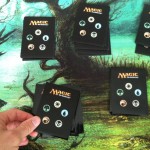My informant used to play tackle football – yes that’s right, TACKLE football – in a friend’s backyard, with no pads or helmets or anything. His friend had a large enough backyard to accommodate play. Also this was, according to my informant, back in the days before wavers and rampant lawsuits and whatnot. If you got hurt, you got hurt and went home and that was the end of that. So everyone would get together at this one person’s house and divide up into teams, usually it would be 5 on 5, but sometimes as big as 7 on 7. It was self-hike, and you could pass or run. The backyard was big but it wasn’t quite football field huge, so there were no distance markers, just two end zones marked out. You had to get a first down or a touchdown or else you would be forced to give up the ball. First downs were obtained by making two complete passes. Players were also allowed to throw lateral passes during plays, making the game very “Razzle Dazzle” as my informant put it.
While I have never played padless tackle football, I have played several games of small-field football. Usually there were one of two ways you could make a first down. Either you had to cross the halfway point of the field, or you had to make two complete passes during your first four downs. Also when the ball was turned over on downs, the other team simply took their ball all the way back to where it would be if the original team had made a touchdown. Interceptions, on the other hand, are played at the spot where the interceptor is deemed down. Back in the 70’s though, people were not as uptight as they are now about kids getting hurt and roughhousing and such, and parental supervision was hardly required for kids to play sports. This does not necessarily mean that parents were less concerned with the safety of their children than they are now, but instead that no one wants to get sued, so they make sure that no harm befalls their children or, more importantly, that no harm befalls other children while they are around. As soon as someone figured out that you can so another person when your child gets hurt at their house, everyone was in a hurry to make sure playdates and games were absolutely safe, lest they get their butt sued.

